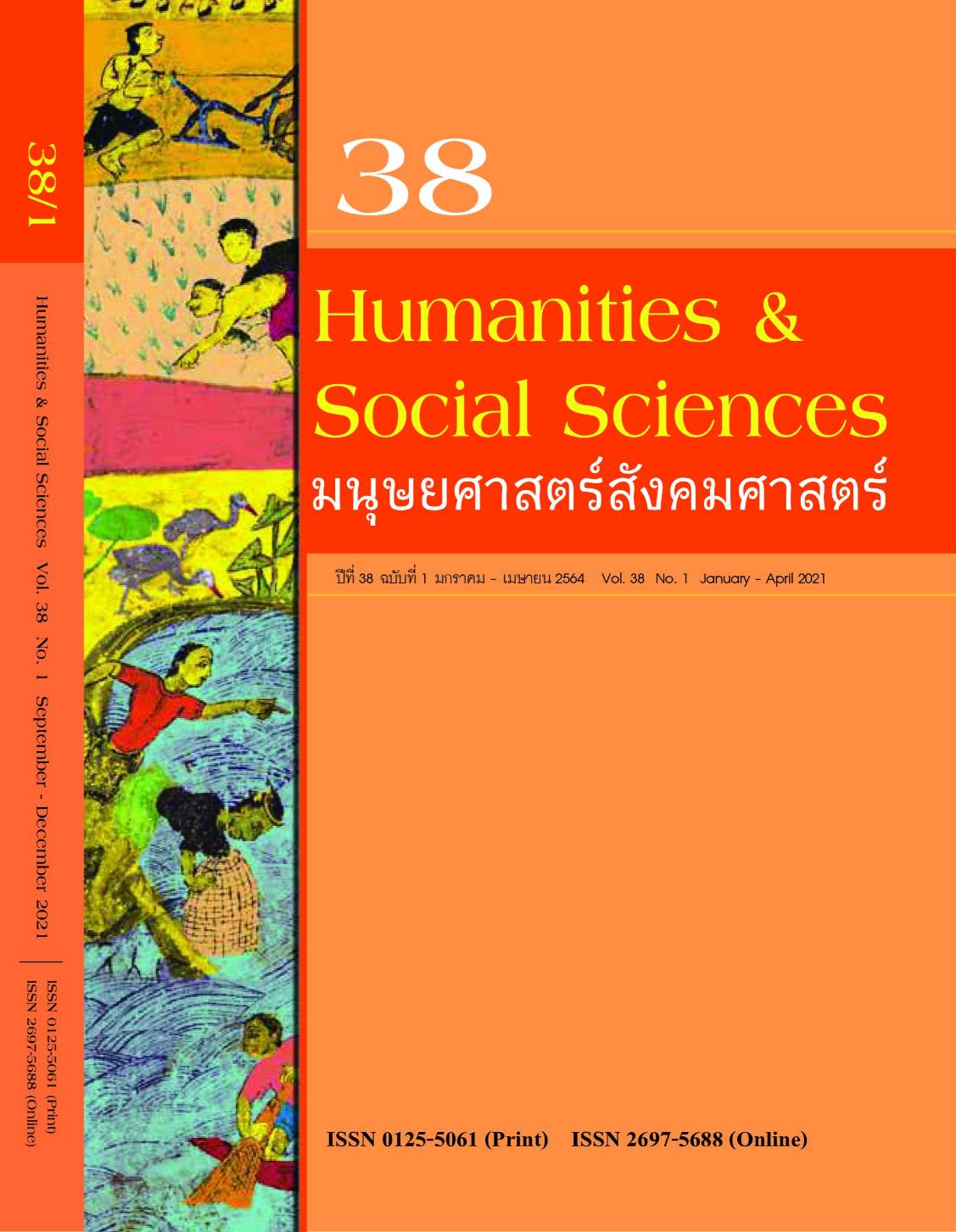บทบาทของฮอลันดาในช่วงสมัยญี่ปุ่นแยกตัวโดดเดี่ยว (1639-1853)
Roles of the Dutch in Japan During the Period of Isolation (1639-1853)
Keywords:
Japan, Edo, Holland, Dutch, SeclusionAbstract
Abstract
This article aims to study about roles of the Dutch from Holland during the isolated period of Japan (1639-1853). Holland was the only western country that Japan maintained contact with, by the time that European nations were colonizing and were developed by the scientific and industrial revolutions.
The study found that alongside with being a well-known trader, the Dutch were also the western world connection for Japanese by diffusing the western knowledge via the imported goods, books, languages, the Dutch, themselves. Also, Dejima, the island where they inhabited in, was an intercultural space for Japanese to directly learn western culture by interacting with them. Moreover, the Dutch recorded and reported the world affairs to Japan government and periodically paid respect to the Shogun, the header of the government, through the court journey to Edo to obtain a good relationship and some benefits for their trade. These roles of the Dutch could be one of the preparations for Japan to develop into the modern nation stated after ending the national seclusion.
Keywords: Japan, Edo, Holland, Dutch, Seclusion
References
เพ็ชรี สุมิตร. (2543). ประวัติศาสตร์ญี่ปุ่น. ปทุมธานี: โครงการญี่ปุ่นศึกษา สถาบันเอเชียตะวันออกศึกษา มหาวิทยาลัยธรรมศาสตร์.
จอนห์ เค. แฟร์แบงค์ และคณะ. (2007). เอเชียตะวันออกยุคใหม่: จีน ญี่ปุ่น เกาหลี ไต้หวัน เล่ม 1. [East Asia, the modern transformation] (เพ็ชรี สุมิตรและคณะ, แปล). กรุงเทพฯ: โครงการตำราสังคมสงเคราะห์และมนุษย์ศาสตร์ สมาคมสังคมศาสตร์แห่งประเทศไทย, 2518-2521. (ต้นฉบับพิมพ์ปี ค.ศ. 1965)
เทิร์นบูล, เอส. (2530). ซามูไร ชนชั้นนักรบของญี่ปุ่น. (ภิรมย์ พุทธรัตน์, ผู้แปล). กรุงเทพฯ: บริษัท อี.ที. เซอร์วิส.
วีระชัย โชคมุกดา. (2554). ประวัติศาสตร์ญี่ปุ่น ฉบับสร้างชาติ. กรุงเทพฯ: ยิปซี.
คงศักดิ์ สันติพฤกษวงศ์. (2528). วิวัฒนาการทุนนิยมของญี่ปุ่น. กรุงเทพฯ: มหาวิทยาลัยธรรมศาสตร์.
Cullen, L.M. (2003). A History of Japan, 1582-1941: Internal and External Worlds. Cam- bridge: Cambridge University Press.
Doolan, P. (2000). The Dutch In Japan. History Today. 50(4), 36-42.
Fris, V. (2014). A Distance of Thirteen Thousand Miles: The Dutch through Japanese Eyes. East Asian History. 39, 131-138.
Goodman, G.K. (2013). Japan and the Dutch 1600-1853. Routledge.
--------------------. (2013). Japan: the Dutch experience. A&C Black.
Henshall, G.K. (1999). A History of Japan: From Stone Age to Superpower. New York: St. Martin’s Press.
Jansen, M.B. (2002). The making of modern Japan. Harvard University Press.
Nishihira, I. (1975). Channels of Western Learning in Isolated Japan, 1639-1853. Journal of General Education Department. Okinawa Kokusai University.
Screech, T. (1996). The western scientific gaze and popular imagery in later Edo Japan: The lens within the heart. Cambridge university press.
Takano, Y. (2010). Foreign influence and the transformation of early modern Japan. Emory Endeavors Journal. 3, 82-93.
Tantri, E. (2016). The Dutch Science (Rangaku) and its Influence on Japan. Jurnal Kajian Wilayah. 3(2), 141-158.
Terrence, J. (2007). Social Decorating: Dutch Salons in Early Modern Japan. Studies on Asia Series III. 4(2).
Titsingh, I. (2006). Secret memoirs of the shoguns: Isaac Titsingh and Japan, 1779-1822. Routledge.
Wahid, A. (2016). The Dutch’s ‘Floating Life’ on Deshima Island: A Gloomy Side Of Dutch-Japan Relationship During The Tokugawa Period, 1715-1790. Jurnal Kajian Wilayah. 6(1), 1-16.
Yamashita, N. (2015). A Short Introduction to the History of Dutch Studies in Japan. Nagasaki Daigaku Gengokyouiku Kenkyu Center Kiyou. 3, 57-77.
浅田毅衛. (2000). 鎖国政策下の日本貿易. 明大商学論叢. 82(1), 27-46.
国立国会図書館. (2009). 江戸時代の日蘭交流. Retrieved May 26, 2020, from https://www.ndl.go.jp/nichiran/s1/s1_1.html
越田辰宏. (2017). 長崎が拓いたアジアとヨーロッパの交流. 多摩大学インターゼミ・アジアダイナミズム.
田中深雪. (2015). 長崎における阿蘭陀通詞に関する考察: 地役人としての立ち位置とその評価をめぐって. 通訳翻訳研究. (15), 55-74.
遠山淳. (2011). 五島・長崎をめぐる異文化交流のトポグラフィー: 鎖国史観からグローバル・ヒストリーの視点へ: 序論にかえて. 桃山学院大学総合研究所紀要. 37(1), 109-123.
松方冬子. (2008). 1853 (嘉永 6) 年の別段風説書蘭文テキスト. 東京大学史料編纂所研究紀要. (18), 1-17.
渡辺のぞみ. (2017). 海道を歩いたオランダ人たちの目に映った日本 ―ケンペル・ツュンベリー・シーボルトの旅行記から―. 研究旅行制度報告書
レイニアー・ヘスリンク. (2000). 芝蘭堂のオランダ正月1795年1月1日. (矢橋篤訳) 早稲田大学図書館紀要. 47, 101-151.



